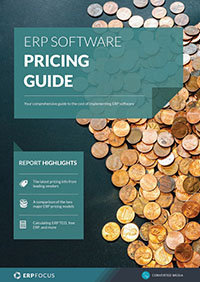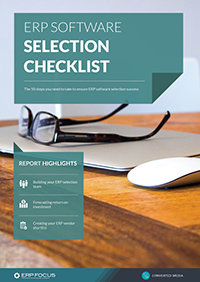Three direct links between ERP and manufacturing revenue
Many people see ERP systems as accounting tools or transaction trackers, but they offer far more, particularly in boosting manufacturing revenue and minimizing revenue leakage. Here's what to focus on:
1. Production scheduling
Revenue depends on timely deliveries. A sale isn’t complete until the product is in the customer's hands. Every manufacturing ERP includes production scheduling, but this tool is often underutilized. Your customers tell us when they want their order delivered - enter that date in your ERP sales orders module. The system will then schedule production and purchasing to meet these deadlines.
Recommended reading: find out how ERP software could increase your company’s profits with our step-by-step guide to calculating ERP ROI.
When delays are anticipated, the ERP system alerts you early, giving you time to inform customers and adjust plans. This proactive approach helps maintain customer satisfaction and prevents financial losses associated with late deliveries, which can quietly erode your profits.
2. Revenue recognition
Accurate revenue recognition is crucial for compliance and financial transparency. Manufacturing ERP systems include accounting modules that help you handle this efficiently. Whether your sales involve products, services, or subscriptions, you can configure the ERP to align with GAAP standards.
Missteps in recognizing revenue can lead to discrepancies that affect your bottom line. ERP systems ensure every sale is recorded correctly and at the right time, helping to close the gaps that could otherwise lead to missed income opportunities.
3. Business intelligence for manufacturing
Business intelligence (BI) tools within your ERP system provide valuable insights by analyzing past sales data. This helps you understand seasonal trends, which can be factored into your production planning to capture peak demand periods.
Moreover, BI can pinpoint shifts in product or customer revenue streams, guiding you to reallocate resources to more profitable areas. It also helps identify emerging market opportunities by combining internal data with external market trends, giving you a competitive edge.
Conclusion
All these tools are included as standard with most manufacturing ERPs, and many offer advanced options for more complex needs. For example, while all ERP systems include basic production scheduling, advanced versions provide enhanced capabilities, such as resource optimization and priority handling for key customers.
Free white paper

Calculating ERP ROI: 5 steps to success
Calculate your new ERP's financial benefits with this comprehensive guide

Featured white papers
-

ERP Software Pricing Guide
Get the latest pricing information on over 80 popular ERP systems, and learn how to budget for your ERP project in our free guide
Download -

Calculating ERP ROI: 5 steps to success
Calculate your new ERP's financial benefits with this comprehensive guide
Download -

60-Step ERP Selection Checklist
Get the comprehensive checklist for your ERP selection project
Download
Related articles
-

5 Ways ERP Forecasting Can Improve Business Efficiency
Read about 5 areas of your business which can be dramatically improved through ERP forecasting.
-

CMMC Compliance: What Aerospace and Defense Manufacturers Need to Know
Key insights on CMMC compliance, deadlines, and securing DoD contracts with CMMC 2.0 certificatio...
-
![3 Tips for Achieving Buy-In for Your ERP Integration [by pressfoto on Freepik] 3 Tips for Achieving Buy-In for Your ERP Integration [by pressfoto on Freepik]](jpg/3%2btips%2bfor%2bachieving%2bbuy-in%2bfor%2byour%2berp%2bintegration%2b%255bby%2bpressfoto%2bon%2bfreepik%255d65d7.jpg)
3 tips for achieving buy-in for your ERP integration
Read our expert’s tips on getting your ERP integration project off the ground by achieving busine...

